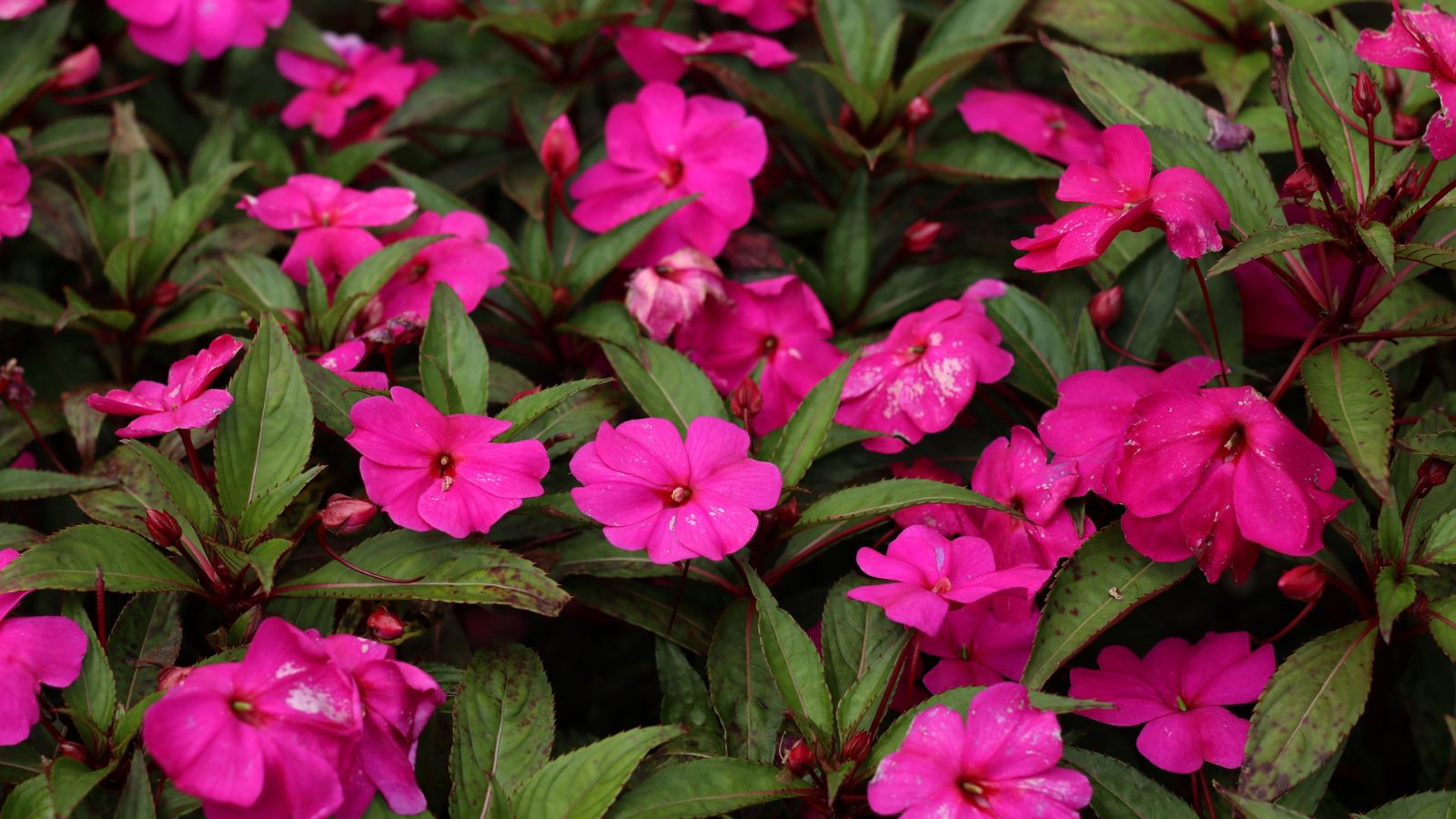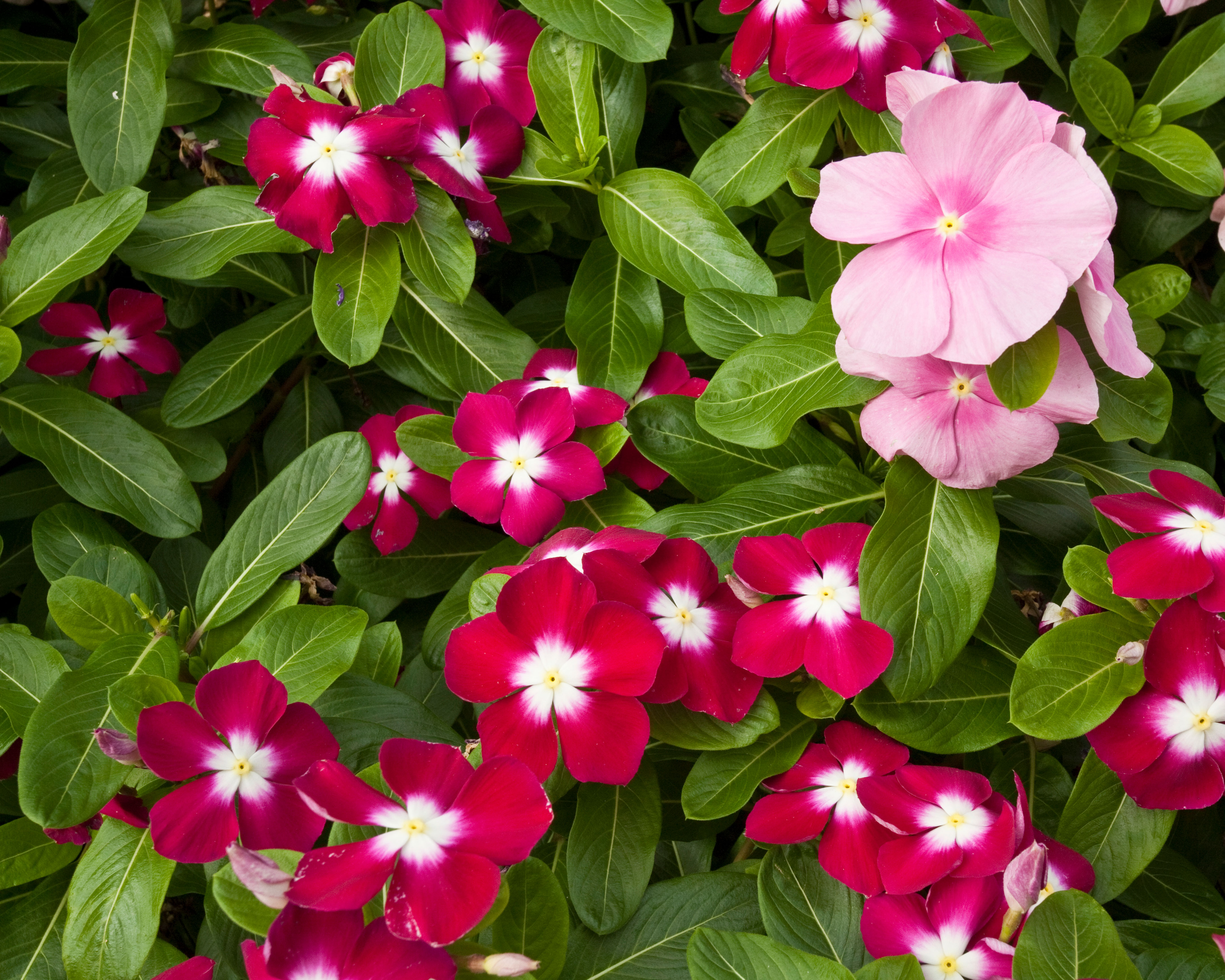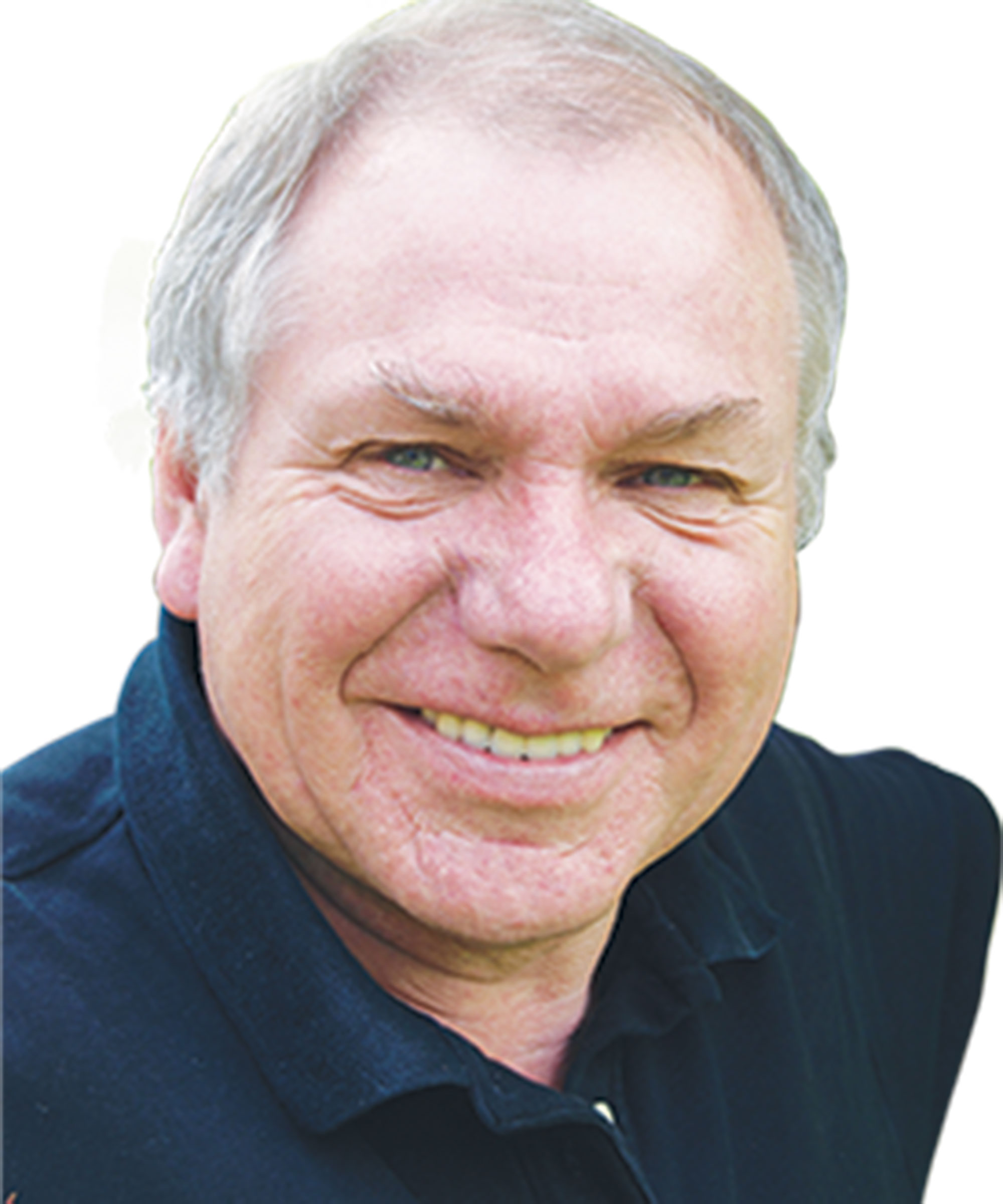Why are my impatiens leaves turning yellow? The answer – plus ways to keep them healthy
Discover the reasons impatiens leaves go yellow and the essential care these colorful flowers need


They’re a deservedly popular choice for the summer garden, but if yours aren’t looking their best, you’ll be asking why are my impatiens leaves turning yellow?
Favorites as part of flower bed ideas, impatiens are also popular for container gardening. What’s more, they’re easy to look after, rewarding just a little care with profuse blooms on show all season long, and they're one of the best container plants for shade.
But one issue you might encounter is leaves turning yellow and we’ve asked the experts to explain here why this might happen and how to avoid it to keep these beautiful flowers looking fabulous all summer.
4 reasons why impatiens leaves turn yellow

Impatiens – or busy Lizzies as they’re otherwise known – are a popular choice with blooms in shades including red, pink, orange, violet, and white. They’re one of the best shade plants making it easy to bring summer color to partially shaded areas and they’ll even tolerate full shade.
But while they are low maintenance, one problem that can afflict impatiens is that of healthy green leaves turning yellow instead. These are the reasons why and how to avoid it happening.
1. Old leaves
One of the reasons that impatiens leaves turn yellow isn’t too much to be concerned about. ‘It is quite common for the lower leaves on plants to turn yellow and fall off,’ explains Amateur Gardening expert Steve Bradley. ‘Most plants will shed older leaves that are no longer contributing to the growth and wellbeing. This happens more rapidly if the leaves concerned are fully or partially shaded.’
Young leaves that start to yellow are, on the other hand, the sign of another issue, which we’ll address below.

Steve has written (or co-written) over 40 practical gardening books, and was commissioned to update some of the world’s best-selling gardening books, The Expert series, originally written by Dr David Hessayon.
Over the years, Steve has also written for most of the popular UK gardening magazines, including Amateur Gardening. He is a member of The Garden Media Guild and has a vast knowledge of gardening and enjoys sharing it with listeners to BBC local radio in the UK. He is a resident gardening expert, answering listeners’ questions during live gardening phone-in shows.
2. Pests and diseases
There are a few different pests and diseases that can cause yellow leaves on impatiens. ‘One common pest that can cause yellowing of impatiens leaves is nematodes,’ explains Susan Brandt, co-founder of Blooming Secrets. ‘With this pest, you will find in the early part of the day the leaves are yellow but later in the day, the leaves are looking better. If this is your problem, dig the plant up and throw it away.
‘If you find the impatiens leaves turning yellow and the flowers wilting, and the stems do not look that strong, your plant is probably suffering from a fungus known as botrytis blight. To treat your plant, cut away infected parts of the plant and destroy them. To kill the fungus, prepare a solution of water with 10 per cent bleach and mist the plant. This will prevent the fungus from spreading.
‘Downy mildew can also result in yellowing of impatiens leaves. With this culprit, the leaves will start with brown spots and then they can turn yellow. This mildew is not a fungus, so you will have to dig up and get rid of the entire plant. Make sure you do not replant another impatiens in the same location until you remove the infected soil.
‘A fungus named verticillium wilt attacks the soil first and then the plant, turning the leaves yellow. Follow the same treatment as the downy mildew. You will have to get rid of the plants and destroy them.’
3. Lack of nutrition
Nutrition can be a reason for yellow impatiens leaves. ‘If young leaves start to turn yellow and/or fall, this may be a lack of nutrition, a watering issue, or both,’ explains Steve Bradley. ‘An early sign is that, usually, these leaves will be much smaller than normal.’
There’s more on watering below, but when you’re planting impatiens add compost or a slow release fertilizer to provide nutrition for the plants. Growing them in containers? These plants may require more frequent fertilization. Aside from that, impatiens like soil that’s slightly acidic (pH range of 6.0 to 6.5) and it should be humus rich and well drained.
4. Over or underwatering
It’s important to find the optimal balance when watering impatiens. ‘Overwatering or underwatering can lead to yellow leaves in impatiens plants,’ says Susan Brandt. ‘Impatiens are known for their vibrant and healthy green foliage, so when the leaves start turning yellow, it is a sign that something is not quite right with their water intake.
‘When impatiens are overwatered, their roots can become waterlogged and suffocate, leading to poor nutrient absorption. This lack of oxygen and nutrients can cause the leaves to turn yellow. On the other hand, underwatering deprives the plant of sufficient water, causing dehydration and stress. The lack of water affects the plant’s ability to carry out essential processes like photosynthesis, resulting in yellowing leaves.
‘To prevent this issue, it is important to find the right balance when watering impatiens. The soil should be moist but not soggy. Regularly check the moisture level by sticking your finger into the soil; if it feels dry at a depth of one inch, it’s time to water your impatiens.’
FAQs
What are signs of overwatering impatiens?
Yellow leaves are a sign of overwatering impatiens, as is a wilting plant. Your natural reaction to a wilting plant is likely to be to water it, of course, but soil that’s too wet can suffocate the plant roots. The overmoist soil causes the root rot that means nutrients aren’t being absorbed with yellow leaves the result, while the plant wilts and eventually dies. If the stems become squishy and the roots look brown and mushy, the best course of action is to replace impatiens.
Impatiens are an easy-care option for summer color and need just a little knowhow to avoid problems, which are often signposted by yellow leaves. Consider them as part of front yard landscaping ideas as well as for the backyard as they’re a reliable way to add curb appeal whether you’re selling or simply want to be greeted with a beautiful display every time you return home.
Sign up to the Homes & Gardens newsletter
Design expertise in your inbox – from inspiring decorating ideas and beautiful celebrity homes to practical gardening advice and shopping round-ups.

Sarah is a freelance journalist and editor. Previously executive editor of Ideal Home, she’s specialized in interiors, property and gardens for over 20 years, and covers interior design, house design, gardens, and cleaning and organizing a home for Homes & Gardens. She’s written for websites, including Houzz, Channel 4’s flagship website, 4Homes, and Future’s T3; national newspapers, including The Guardian; and magazines including Future’s Country Homes & Interiors, Homebuilding & Renovating, Period Living, and Style at Home, as well as House Beautiful, Good Homes, Grand Designs, Homes & Antiques, LandLove and The English Home among others. It’s no big surprise that she likes to put what she writes about into practice, and is a serial house renovator.
-
 Should you dry your clothes outside if you have hayfever? Allergy specialists warn sufferers to steer clear of this 'major trigger'
Should you dry your clothes outside if you have hayfever? Allergy specialists warn sufferers to steer clear of this 'major trigger'Doing so can trigger asthma, coughing, itchy eyes and more
By Sophie Warren-Smith
-
 Lenny Kravitz says design is 'just like music' – and the stunning materials of this bedroom embody this laidback luxe approach
Lenny Kravitz says design is 'just like music' – and the stunning materials of this bedroom embody this laidback luxe approachRich textures and opulent finishes come together in a Los Angeles bedroom designed by the musician – it's ultra-chic, but relaxed
By Sophie Edwards